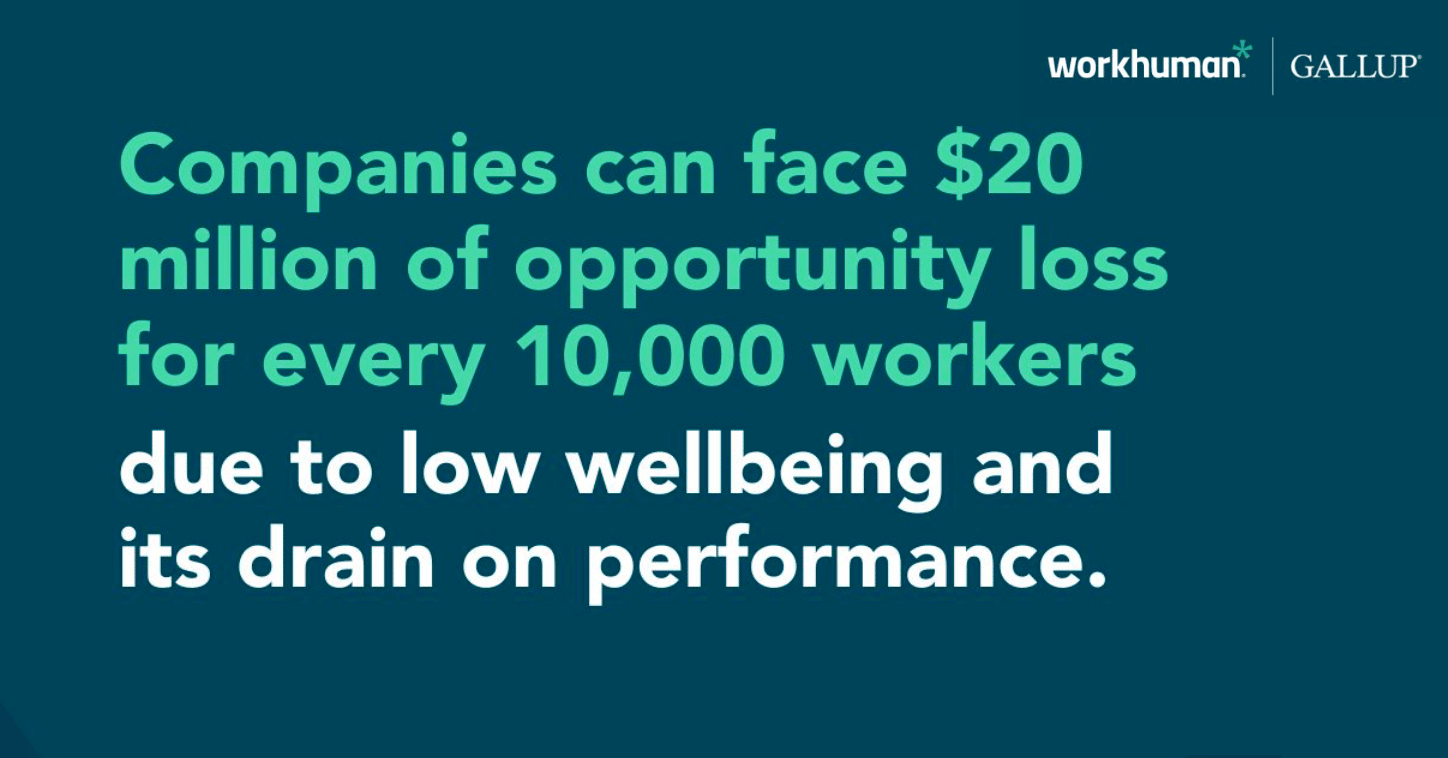How Recognition Improves Employee Wellbeing and the Bottom Line

Employee wellbeing is now high on HR’s agenda and becoming a critical priority for every business.
The way we support and enable our people is probably the most essential factor in attracting and retaining the talent we need, whilst also driving productivity and successful commercial performance.
In the aftermath of the COVID-19 pandemic, we have seen a gradual reset in employee priorities, specifically around how and where they want to work.
This restlessness has given rise to negative workplace trends such as ‘Quiet Quitting,’ where our people exert minimum effort and just do the basics of their role.
And, we can’t forget about ‘The Great Resignation’ referring to the large increase in the number of post-pandemic job moves, that continues today.
Research and commentary around these trends usually highlight the importance of employee wellbeing.
How our people feel - physically, mentally, and emotionally - about the work they do, and the people they do it for and with, is crucial to engagement and retention.
When employees feel happy, valued, and supported, they are more likely to be motivated and productive, which boosts engagement and retention.
They are also more likely to feel connected to their colleagues and to the organizational culture and mission, which helps create a positive workplace experience.
On the flip side, Workhuman® recent research with Gallup has highlighted how a lack of wellbeing can hinder productivity, engagement, and morale, and lead to low engagement and increased employee restlessness.
The research showed a $322 billion global cost to businesses through employee turnover and lost productivity when low wellbeing leads to employee burnout, with organizations losing $20 million for every 10,000 workers.

Wellbeing may be a universal need for our people to be able to lead fulfilling lives - they are 2x as likely to evaluate their lives, and their futures more positively, when they feel a sense of wellbeing at work - but it is now also crucial for long-term business success.
The key to improving wellbeing is employee recognition.
When people evaluate their lives, the way they are treated at work plays an important part in how well they feel.
Research consistently shows that people who are recognized at work feel more valued and appreciated for their efforts, helping to improve their wellbeing.
The research shows that an individual is 91% more likely to be thriving - not only in work but also in their personal lives - if they feel they get sufficiently recognized for the work they do.
Recognizing our people also helps to show appreciation for what they are doing, which in turn improves motivation and job satisfaction, making them less likely to feel stressed, helping to nurture a sense of belonging and connectedness to the organization and their colleagues.
Workhuman’s research with Gallup highlighted the correlation between receiving and giving recognition, how employees feel, and the impact on wellbeing and culture:
- When receiving the right amount of recognition, they are up to 84% more likely to be thriving (and 40% less likely to feel stressed).
- When giving recognition, they are up to 105% more likely to be thriving overall.
- If employees feel a sense of wellbeing at work, they are 2x as likely to feel positive about their lives and their future.
- Receiving recognition at work can amplify an employee’s sense of belonging at their organization 10x and strengthen their feeling of connectedness to their employer and colleagues.
So, if recognition is the key to improved wellbeing, greater connectedness, and improved financial performance, how can we start achieving this?
Begin with ‘thanks’
People like receiving thanks and giving thanks! It releases hormones in the body that give positive impulses.
These feelings help to create stronger bonds and feelings of connectedness amongst colleagues which can lead to increased levels wellbeing and job satisfaction.
Build a culture of recognition
Recognition is something that needs to be hardwired into everyday life at work.
As I’ve already shared, employees who feel recognition is a strong part of their company culture are up to 91% more likely to be thriving.
Workhuman research shows that thanking colleagues need only happen 5 or 6x a year for an employee to feel sufficiently seen and recognized.
Thanking colleagues, recognizing when they have helped or supported them, and appreciating their achievements should all be part of the business culture and not something that needs to be prompted.
Colleagues don’t need permission to recognize each other (and their leaders), but encouragement to do it all the time certainly helps.
Start from the top
It begins with leaders, who must realize that showing appreciation is a sign of strength.
Employees are much more likely to respond positively to management who recognize achievements and endeavors and will begin to echo that appreciation with their own colleagues and team members.
Relying on individual moments of recognition is often not scalable in the day-to-day practice of management. As Derek Irvine said in a recent interview on the “HR Means BusinessOpens in a new tab” podcast:
The problem is that it tends to fall to the bottom of the to-do list. People will say, 'I’m definitely going to start doing that tomorrow’ but then tomorrow arrives, and there’s budgets, planning, and project milestones, and it falls to the bottom of the to-do list. We just don’t do it often enough.
With the need to attract, develop, and retain talent now firmly established as a major challenge for businesses, it will be by creating and nurturing employee wellbeing through building a culture of recognition and appreciation that organizations will be able to achieve their commercial goals.
Want to learn more about bringing wellbeing into the workplace and how it can help your employees?
Listen to the latest episode of HR Means Business with Mervyn Dinnen and guest Derek Irvine.